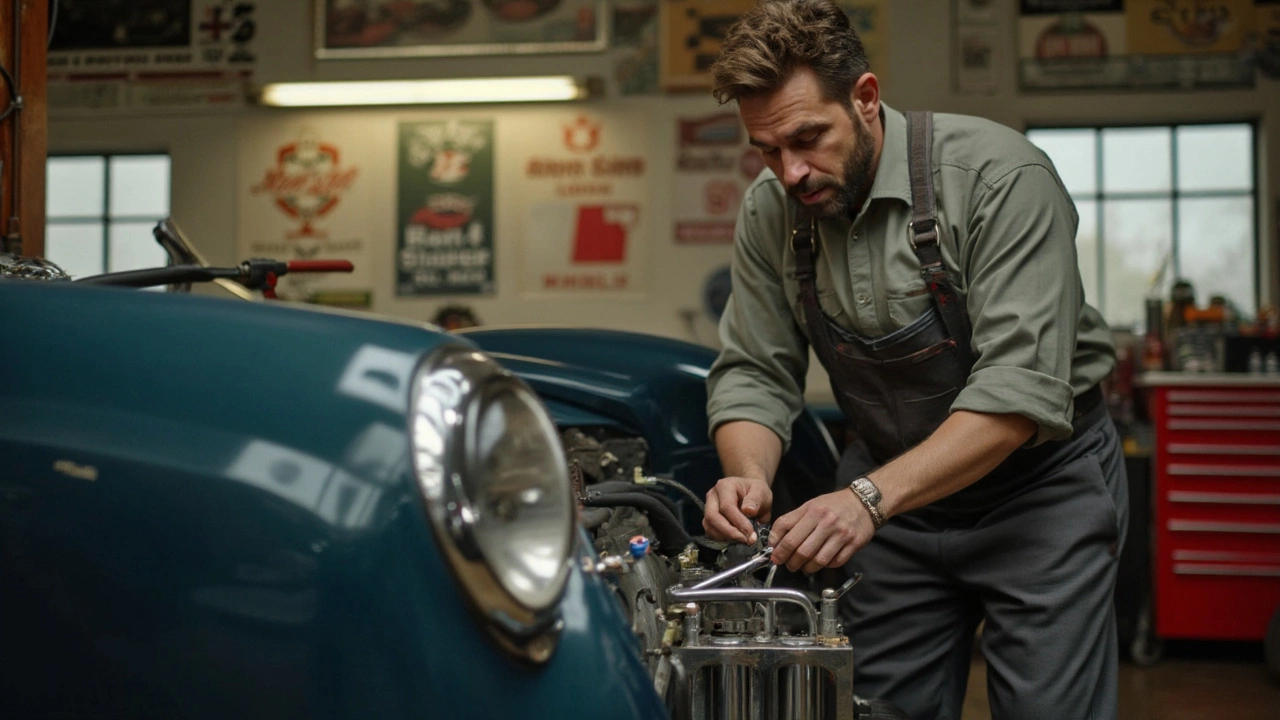Battery Disconnection: Why It Matters and How to Do It Right
Ever wondered why mechanics always start by taking the battery off? It’s not just a habit – disconnecting the battery protects your car’s electronics and keeps you safe. Whether you’re swapping a dead battery, fixing a faulty starter, or resetting a stubborn ECU, a clean disconnect can save you from costly mistakes.
When Should You Disconnect the Battery?
Here are the most common moments you’ll need to pull the negative terminal:
• Replacing an old or dead battery. Old cells can leak, and you don’t want acid on your hands or the car’s parts.
• Working on the starter motor, alternator, or any wiring that sits close to the battery. Live voltage can cause sparks, and sparks can ruin sensitive electronics.
• Resetting the car’s computer after a major repair. Some ECUs stay in an error state until power is fully cut.
• Installing aftermarket accessories that draw a lot of current, like a high‑power audio amp. A fresh start helps avoid blown fuses.
Step‑by‑Step Guide to Disconnecting Safely
1. Gather the right tools. A set of insulated wrenches (usually 10 mm for most cars) and a pair of safety gloves are enough. If you have a battery terminal puller, that makes the job easier.
2. Turn off the engine and remove the key. Even if the car looks off, some systems stay powered for a few minutes.
3. Locate the battery. In most cars it’s under the hood, but some models hide it in the trunk or under a seat.
4. Identify the negative terminal. It’s marked with a “‑” sign and usually has a black cable. The positive side has a “+” and a red cable.
5. Loosen the negative clamp. Turn the bolt counter‑clockwise until it’s free. Keep the wrench away from the positive terminal – a slip could cause a short.
6. Lift the negative cable off the post. Move it to the side and secure it with a piece of cloth or a zip tie so it can’t accidentally touch the battery again.
7. Do the same for the positive side only if your job needs it. Most basic tasks only require the negative side, but if you’re removing the whole battery, disconnect the positive after the negative.
8. Check for any warning lights. Your dashboard should be dark. If a light stays on, double‑check that both cables are truly off.
9. Proceed with your repair. With the battery out of the loop, you can test wires, replace parts, or install new accessories without fearing a surprise spark.
When you’re done, simply reverse the steps: connect the positive cable first, then the negative, and tighten the clamps snugly. Start the engine – if everything runs smooth, you’ve done it right.
Remember, a loose clamp can cause corrosion or a weak connection, which leads to starting problems later. A quick visual check after you’re finished is worth the few extra seconds.
Need a new battery? Our shop in Northwich stocks a range of sizes and brands to fit any make. We can also handle the full disconnect‑and‑install service, so you don’t have to worry about a thing.
Bottom line: disconnecting the battery isn’t hard, but it does need a bit of care. Follow the steps, use the right tools, and you’ll protect both your car and yourself from unnecessary damage.
 25 February 2025
25 February 2025
Disconnect Battery First? Swapping Out Your Fuel Pump Safely
Wondering if you should disconnect the battery when changing your car's fuel pump? This practical guide explores why it's crucial to cut power before swapping out your fuel pump, ensuring both safety and efficiency. Learn valuable tips and intriguing facts about maintaining your car's fuel system, so you can tackle this task like a pro. Discover how small steps can make a big difference in your car's performance and your peace of mind.






0